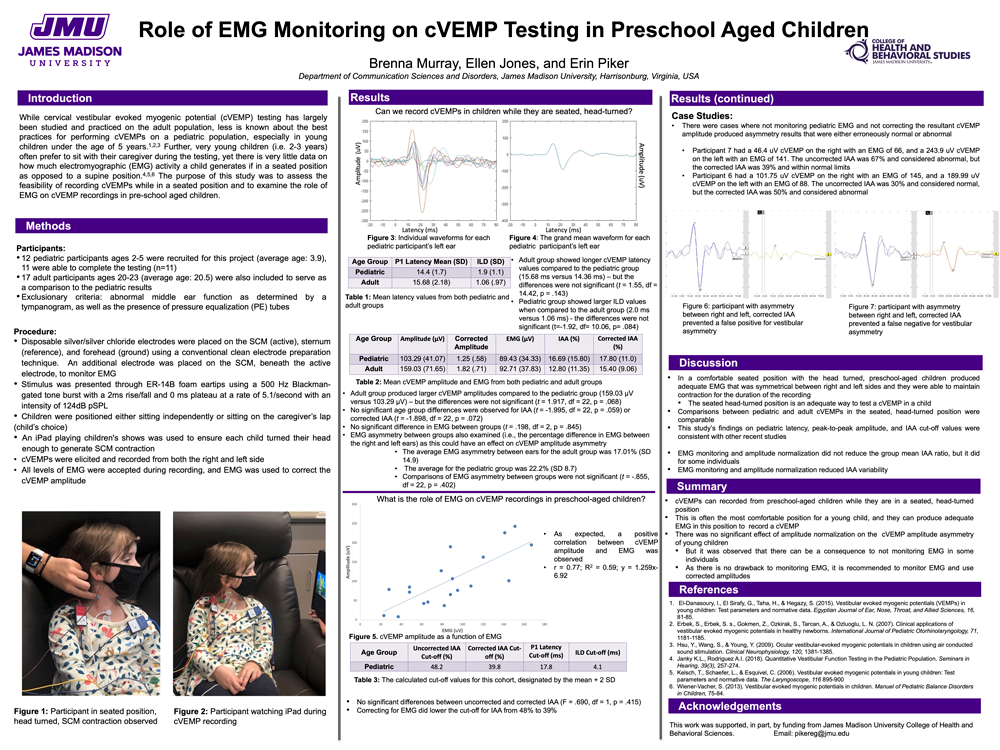Role of EMG Monitoring on cVEMP Testing in Preschool Aged Children
Audiology
While cervical vestibular evoked myogenic potential (cVEMP) testing has largely been studied and practiced on the adult population, less is known about the best practices for performing cVEMPs on a pediatric population, especially in young children under the age of 5 years. Further, very young children (i.e. 2-3 years) often prefer to sit with their caregiver during the testing, yet there is very little data on how much electromyographic (EMG) activity a child generates if in a seated position as opposed to a supine position. The purpose of this study was to assess the role of EMG on cVEMP recordings in pre-school aged children in a seated, head-turned position. We collected cVEMPs in a sample of children ages 2 – 5 years using an air-conducted 500 Hz tone burst. Children sat upright either alone or in their care giver’s lap. Results showed the levels of tonic EMG in a seated, head-turned position were adequate to generate a cVEMP. While there was no observable effect of amplitude normalization techniques on cVEMP mean interaural amplitude asymmetry, amplitude normalization reduced intersubject variability and there were individual cases where monitoring and correcting for EMG made a clinically significant difference in test interpretation.

